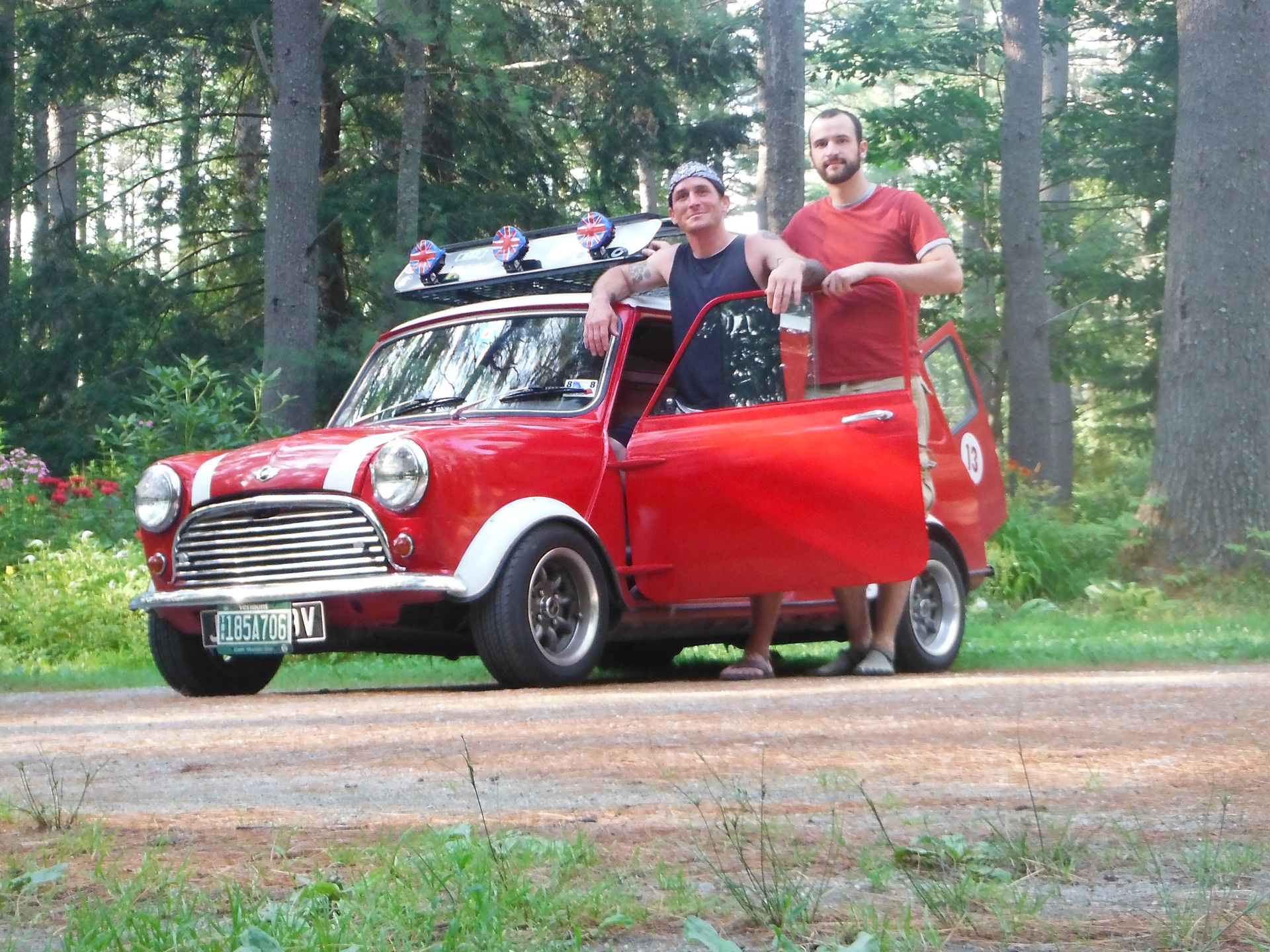I just love tools. I love buying them, having them and using them. I love the way they look, the way they feel in my hand, and the sense of satisfaction I get when I use them to repair or build something.
 I have all kinds of tools: automotive tools, woodworking tools, power tools, plumbing tools, gardening tools—you name it, and I’ve probably got a tool for it.
I have all kinds of tools: automotive tools, woodworking tools, power tools, plumbing tools, gardening tools—you name it, and I’ve probably got a tool for it.
For most people, tools serve a utilitarian function: repairing, maintaining or constructing. For addicts, tools represent a philosophy of life—the idea that something can be made from nothingness. Tools allow you to create order out of chaos. Whether you’re bringing to life a car from out of the miserable heap pushed into the garage, or creating a structure from a pile of lumber, tools give you mastery over the untamed universe. Tools are symbolic of man’s potential. As you stand in front of your car with wrench in hand, preparing to change those spark plugs, you hold affirmation that you have stepped out of the animal kingdom, even if just barely.
So, how do you know if you’re an addict? Simply put, you have more tools than you need. Not just a couple more. A lot more. How many sets of wrenches do you have? Just two? SAE and metric? You’re no addict. I have no less than seven sets of combination wrenches, eight socket wrench sets in four different sizes, air wrenches, torque wrenches—well, you get the idea. Suffice it to say, my tool excess doesn’t stop at wrenches.
 My wife thinks I’m nuts. I try to deflect her questioning looks with solid logic as I’m reaching for my wallet, “I might need this if I ever have to fix the, uh…thing on the car.” This is the—think how much we’ll save if I can fix it myself—strategy.
My wife thinks I’m nuts. I try to deflect her questioning looks with solid logic as I’m reaching for my wallet, “I might need this if I ever have to fix the, uh…thing on the car.” This is the—think how much we’ll save if I can fix it myself—strategy.
Of course, if the “thing” on the car ever does need to be fixed, it will go straight to a mechanic. My wife isn’t foolish enough to let me monkey around with her car. She’s seen mine.
Years ago, my tool addiction evolved from human-powered hand tools to power tools. Oh, I’ve always had portable power tools, circular saws, drills, and sanders. But the craving for power is insatiable. I ordered a table saw, band saw, combination sander, and a dust collection system. But I still need (yes, need) a drill press, a planer, and maybe a lathe. I’d like a lathe.
 I haven’t had to buy all of my tools. A lot of them have filtered down from my tool-wielding ancestors. Tom Galvin, my grandfather, whom I never had the pleasure of meeting, must have been a practical and sensible man. He had a lot of tools, but he actually needed them. If he was an addict, he cleverly concealed his “problem” by using his tools for self-employment.
I haven’t had to buy all of my tools. A lot of them have filtered down from my tool-wielding ancestors. Tom Galvin, my grandfather, whom I never had the pleasure of meeting, must have been a practical and sensible man. He had a lot of tools, but he actually needed them. If he was an addict, he cleverly concealed his “problem” by using his tools for self-employment.
My grandfather was a jack-of-all-trades. He operated a machine shop located behind his home. The shop was powered by a giant, circa-1910 General Electric 5hp motor. The motor provided power to the various machines in the shop through a series of belts and pulleys mounted on a “lineshaft.” It was a common industrial set-up until about the 1940s.
I think my addiction is a direct result of childhood forays into the old machine shop. The tools were silent, as my grandfather had passed away years earlier. But as I looked around, I was fascinated by the mystery they held. “What did that machine make?” I would wonder. “What did that tool do? How did that work?”
I would usually return from visits to the shop covered in filth, and with a hundred questions for my grandmother. When I was a little older, I took a lot of the antique hand tools out of the place for my own use. Antique tools satisfy my tool addiction and compliment my interest in history. Using antique tools is a way of connecting with the past; a connection that, in my case, is profoundly personal.
Much to my wife’s dismay, no doubt, my tool addiction has recently taken an inevitable turn: antique power tools. I had planned, sensibly, to remove the old machinery from the shop to make way for my growing stable of modern tools. But as I prepared to pull down the old lineshaft assembly, my childhood fascination and my addiction overcame my sensible intentions. “Tools,” I said to myself as I stared dazed at the jumble of old pulleys and belts, “can’t get rid of tools.”
In my mind, I could already see the old electric motor whirring away, and hear the squeal of the line shaft, the slap of a dozen leather belts turning a dozen different machines, the rumble of open-geared cast iron machines as they prepare to bore, shave, or cut a chunk of material into a useful object. I was hooked.
So now I’ve committed to restoring these hundred-year old tools, monuments to our country’s change from simple agrarian economy to manufacturing superpower. My latest find, disassembled and buried down in the dark recess of the old machine shop’s basement, is a giant band saw. The two 32-inch wooden wheels mounted on shafts attached to two 10-inch by 10-inch posts turned a band saw blade almost 18-feet long. I even found four unused blades for the old monster. Imagine the whine of that saw as it chewed through a piece of three-inch thick hardwood. It must have been spectacular.
I can’t wait to get started. I’ll probably need a few new tools to get the job done, though. My wife will be thrilled.
By Mike Eldred
There are any number of precision tools for syncing SU carbs, and I have several of them. But, when working on my TF, I almost always go for the low-tech tool—a stethoscope with the chestpiece removed. On a TF, there is very little room in front of the carbs because the engine compartment sides are fixed, unlike a TD or TC. Not only does that make removing the air cleaners an exercise in finger gymnastics, it makes it very hard to get one of the devices that measure intake suction onto carburetor intake—it’s next to impossible to get one on the front carb. So I use the old-fashioned “hiss test”—listen until both carbs have the hiss.








'Tool Addict' has no comments
Be the first to comment this post!